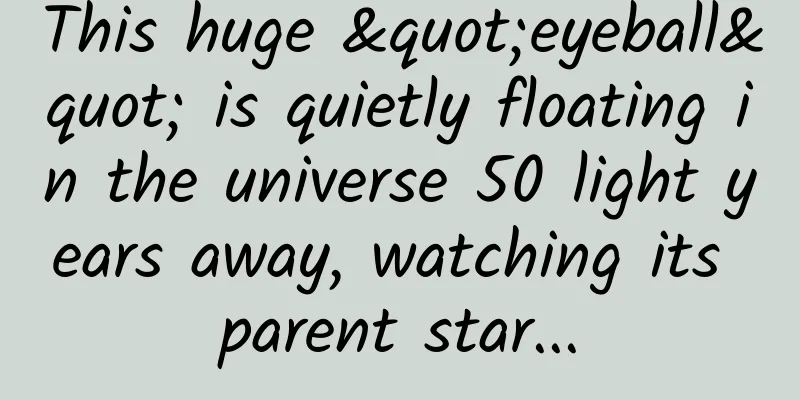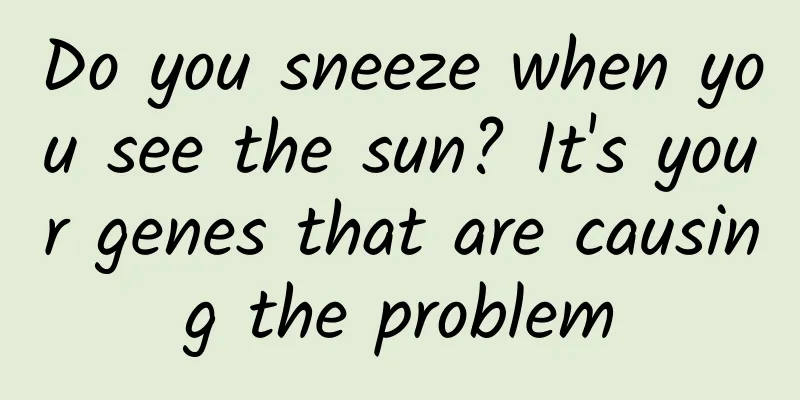This huge "eyeball" is quietly floating in the universe 50 light years away, watching its parent star...

|
The surface of the exoplanet LHS-1140b may be completely covered with ice, or it may have an ocean, making the entire planet look like a creepy giant eyeball (the Earth is on the far right at the same scale). (Image credit: Benoit Gougeon/University of Montreal) In 2017, this exoplanet was identified as one of the most promising worlds outside the solar system to support life. Now the possibility has become higher, but something is wrong . At first glance, the exoplanet LHS-1140b looks like an "eyeball": the surface of the planet is covered with oceans, but most of it is hidden under the ice. There is only a liquid ocean with a diameter of about 4,000 kilometers, which stares at its parent star for a long time like the iris of an eye. "Of all the temperate exoplanets known so far, LHS-1140b is probably the best candidate for indirect evidence of the presence of liquid water on the surface of an extrasolar body," said Charles Cadieux, an astrophysicist at the University of Montreal in Canada. "This would be an important milestone in the search for potentially habitable exoplanets." We discovered LHS-1140b a few years ago. It has a radius about 1.73 times that of Earth and a mass about 5.6 times that of Earth. Although LHS-1140b is larger than Earth, we still consider it a terrestrial planet. It is also closer to its star, LHS-1140, than Earth is, orbiting it in just 25 days. If the star LHS-1140 was like our sun, this orbit would be too close for life. Fortunately, unlike our sun, it is a cool, dim red dwarf , so the distance between the star and the exoplanet is right in the so-called habitable zone . This means that the water on the surface of LHS-1140b will neither completely freeze nor evaporate. Copyright images in the gallery. Reprinting and using them may lead to copyright disputes. Even so, being so close to its star means the exoplanet is likely tidally locked . That is, its rotation is synced with its orbit, so it always faces the star with the same side. The moon is tidally locked to Earth in the same way, so we never see the far side of the moon from Earth. Being in the habitable zone doesn't mean a planet necessarily has what it takes to support life. To learn more about the chemistry of LHS-1140b, we need to study its atmosphere, if it exists. That's what Cadieu and his colleagues are doing with the James Webb Space Telescope (JWST). The star system is less than 50 light-years away, so we can collect specific changes in the starlight when the exoplanet passes through the line between the Earth and the star. At this time, some starlight will penetrate the planet's atmosphere, and the atoms in it will absorb or amplify specific wavelengths of light . Therefore, as long as we can observe which wavelengths of light are affected, we can determine what kind of atoms are in the atmosphere. This allowed the researchers to tentatively confirm the presence of nitrogen , which is a major component of Earth's atmosphere. If LHS-1140b is more of a gas planet, like a mini-Neptune, its atmosphere should be richer in hydrogen. The presence of nitrogen also suggests that this is a secondary atmosphere - an atmosphere that formed later than the planet was born, rather than simultaneously with it. In a study published last year, the team also combined the mass and radius of LHS-1140b to calculate its density, which turned out to be 5.9 grams per cubic centimeter. This density is a bit low for a purely rocky planet, and based on the observed size data, a more appropriate guess is that this is a mini-Neptune or an ocean planet . If the mini-Neptune is ruled out, there is only one possibility left: this is an exoplanet whose surface is completely covered by ocean. But given tidal locking, this global ocean might not be as global as you might think. The side facing away from the star might be cold enough to freeze, and only a small area facing the star would be warm enough to melt , making it look like a creepy, eerie "eyeball" hanging in space. However, surface temperatures in the area could reach 20 degrees Celsius - warm enough for a thriving marine ecosystem. We don’t know for sure what this planet actually is, but it looks like the most promising candidate yet for finding an alien ecosystem outside our solar system, so it’s safe to say that more scientists will be looking into the eyes of that (possible) strange “eyeball” in the future. “Detecting temperate planets with Earth-like atmospheres is pushing the JWST to its limits, but it’s doable, we just need enough observing time,” said René Doyon, a physicist at the University of Montreal. "We now need more data to confirm the presence of a nitrogen-rich atmosphere. We need at least one year of observations to confirm whether LHS 1140b has an atmosphere, and probably another two or three years to detect the presence of carbon dioxide." The relevant paper has been accepted by The Astrophysical Journal Letters, and the preprint version has been published on the preprint library arXiv (not peer-reviewed). References [1]https://www.sciencealert.com/giant-eyeball-a-perfect-place-to-look-for-life-outside-the-solar-system Planning and production Source: Global Science (id: huanqiukexue) By Michelle Starr Translation | Chen Zipeng Editor: Yang Yaping Proofread by Xu Lai and Lin Lin Related Recommendations The cover image and the images in this article are from the copyright library Reprinting may lead to copyright disputes |
>>: The Guishan Island volcano is wearing a vest? We still recognize you!
Recommend
6.18 Mid-Year Promotion Public Relations Events Review, Galanz Becomes the Highlight!
The most popular e-commerce festival to date is t...
Chen Longyu's Talisman Numerology Special Class 13 lessons + handouts
Chen Longyu's Talisman Numerology Special Cla...
China Association of Automobile Manufacturers: A brief analysis of the sales of the top ten SUV manufacturers in January-February 2023
According to statistics and analysis by the China...
3 tips for user retention!
When we were doing research on user retention, we...
Opinion: China's television stations are being overturned much faster than the United States
According to data from foreign research instituti...
How does "Fluent Reading", which has been all over the WeChat Moments, operate a community?
This article will analyze the community from four...
Kuaishou live streaming sales operation skills: How to efficiently carry out live streaming sales
Everyone envies the live streaming sales capabili...
Should I learn Swift or Objective-C directly?
[[120413]] After we released the Swift language l...
Some tips about mobile phone screens
Let's talk about screen replacement, save it ...
How much do you know about performance optimization?
[[196882]] 1. Introduction Recently, a new versio...
How much does it cost to attract investment for the Fuzhou Meat and Poultry Mini Program? What is the investment price for Fuzhou Meat and Poultry Mini Program?
Starting a business requires costs, and mini prog...
The Nine Swords of User Growth Strategy
Product " user growth " is the most tro...
Huawei App Market Paid Promotion Operation Guide!
1. Developer Registration First, you need to regi...
Dr. Mo: The content media industry is in a new dilemma of transformation
In the era of mobile Internet, the content and me...
Sony mobile phone crashes! The laggard who guards the sentiment
[[249054]] It took Sony six years to finally get ...

![[Smart Farmers] Subvert the impression! This kind of "working" bees can also reproduce offspring](/upload/images/67f217109cedb.webp)







